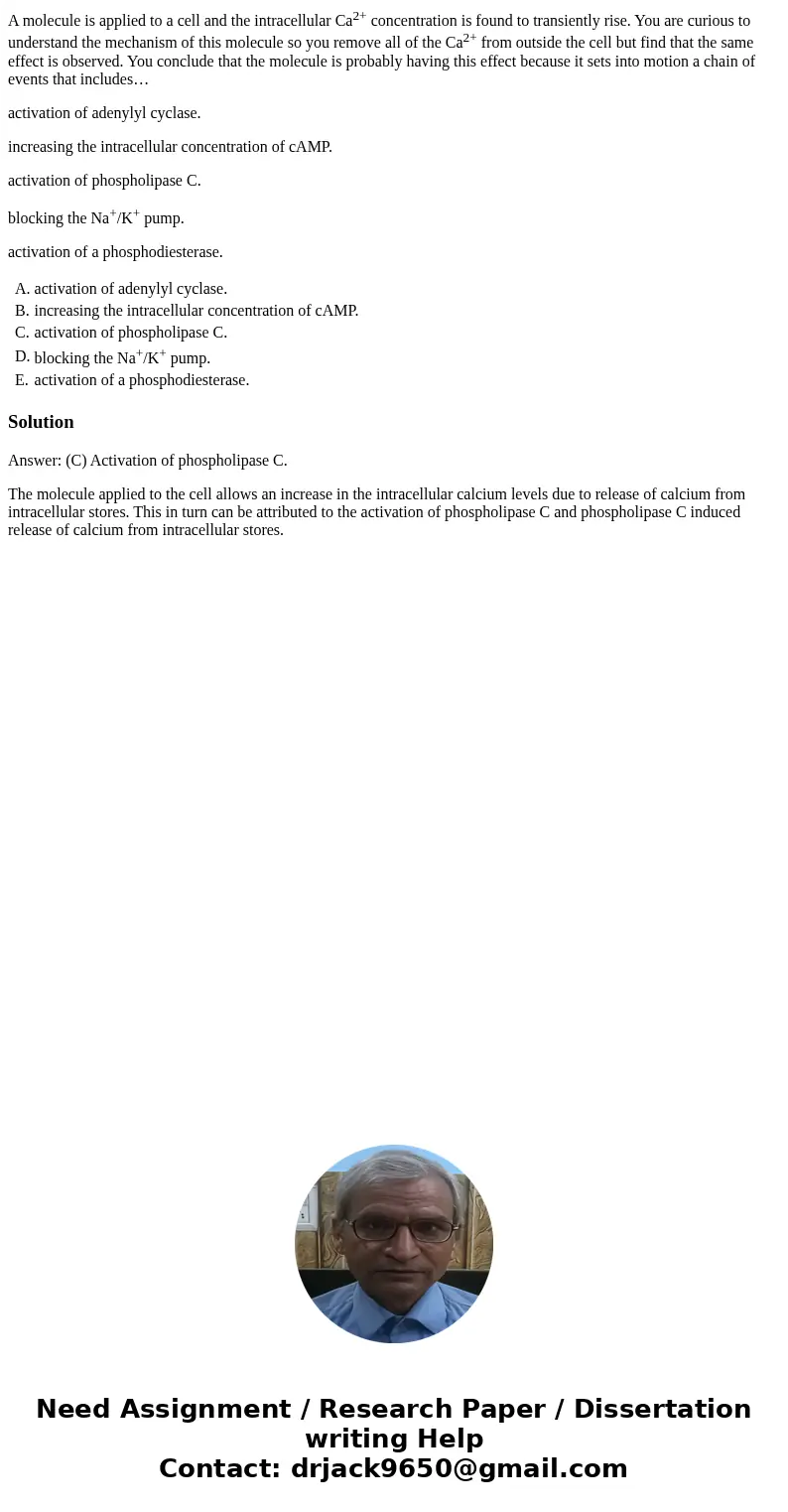A molecule is applied to a cell and the intracellular Ca2 co
A molecule is applied to a cell and the intracellular Ca2+ concentration is found to transiently rise. You are curious to understand the mechanism of this molecule so you remove all of the Ca2+ from outside the cell but find that the same effect is observed. You conclude that the molecule is probably having this effect because it sets into motion a chain of events that includes…
activation of adenylyl cyclase.
increasing the intracellular concentration of cAMP.
activation of phospholipase C.
blocking the Na+/K+ pump.
activation of a phosphodiesterase.
| A. | activation of adenylyl cyclase. | |
| B. | increasing the intracellular concentration of cAMP. | |
| C. | activation of phospholipase C. | |
| D. | blocking the Na+/K+ pump. | |
| E. | activation of a phosphodiesterase. |
Solution
Answer: (C) Activation of phospholipase C.
The molecule applied to the cell allows an increase in the intracellular calcium levels due to release of calcium from intracellular stores. This in turn can be attributed to the activation of phospholipase C and phospholipase C induced release of calcium from intracellular stores.

 Homework Sourse
Homework Sourse